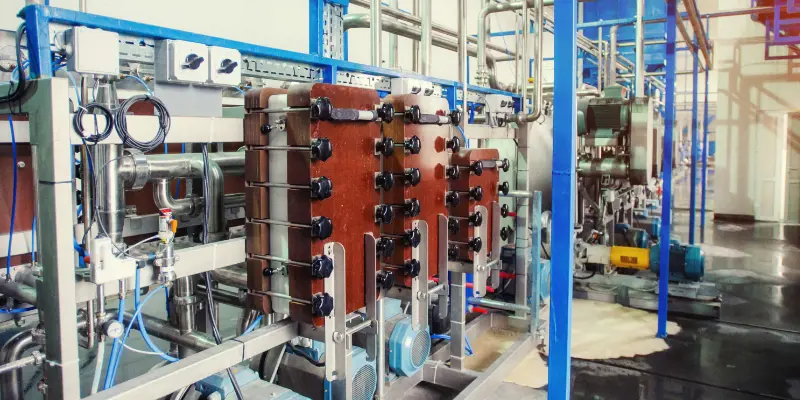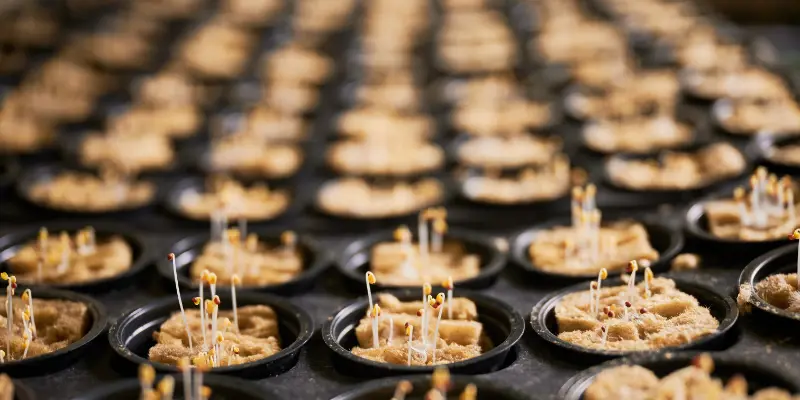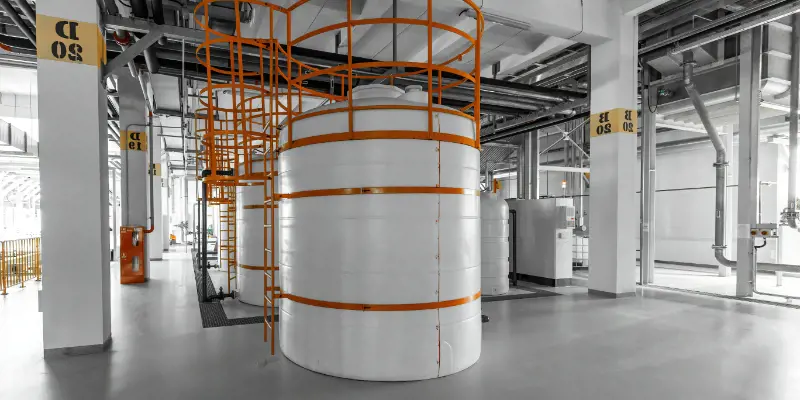pH and Conductivity Control in Industrial Cooling Towers
pH and Conductivity Control in Industrial Cooling Towers
1. Introduction
Cooling tower systems are essential for temperature regulation in industrial facilities, power plants, and HVAC systems. However, maintaining proper pH and conductivity levels is crucial to prevent scaling, corrosion, and microbiological growth. Inadequate monitoring can lead to equipment failures, excessive chemical use, and increased operational costs.

2. Challenges in Cooling Tower Water Management
Industrial cooling tower water faces several challenges:
- Scaling & Corrosion Risks : High conductivity levels lead to mineral buildup, while improper pH levels cause corrosion.
- Microbial Growth : Incorrect water chemistry promotes bacteria and biofilm formation.
- Water Wastage : Overuse of treatment chemicals due to inaccurate readings increases costs.
3. Advantages of an Online pH and Conductivity Transmitter
Our online pH and conductivity transmitters provide a comprehensive solution with:
- Dual 4-20 mA Outputs : Independent monitoring of pH, conductivity, and temperature.
- RS485 Modbus Connectivity : Seamless integration with automated cooling tower control systems.
- Automatic Temperature Compensation (Pt1000 Sensor Input) : Ensures accurate chemical dosing under varying conditions.
- IP65-Rated Industrial Housing : Durable protection against humidity, dust, and harsh environments.
- Built-In Alarm Relays : Triggers alerts when parameters exceed safe limits, preventing costly damage.
4. Applications in Cooling Tower Systems
- Industrial Manufacturing Facilities : Prevents scaling and corrosion in production cooling systems.
- Power Plants & HVAC Systems : Ensures efficient thermal regulation and minimizes downtime.
- Commercial & Industrial Water Treatment : Enhances chemical dosing efficiency for water reuse and sustainability.
5. Conclusion
Using an online pH and conductivity transmitter in cooling tower systems ensures optimized chemical dosing, reduced maintenance costs, and prolonged equipment lifespan. These transmitters provide real-time, accurate monitoring, making them an essential component in modern industrial cooling operations.
Looking to improve your cooling tower water management? Contact us today to learn how our pH and conductivity transmitters can enhance your system’s performance!
Related Posts

Chemical Dosing in Water Treatment Systems
In modern water treatment systems, accurate chemical dosing is essential to ensure proper purification, prevent scaling, and maintain optimal pH levels. Traditional dosing methods using mechanical flow meters often lack the precision and reliability needed for consistent performance. This is where an electromagnetic flow meter designed for small-diameter pipelines becomes an ideal solution.

Precise pH and Conductivity Monitoring in Water Treatment Plants
In modern water treatment plants, maintaining the correct pH and conductivity levels is essential to ensure water quality, regulatory compliance, and efficient chemical dosing. Without precise monitoring, facilities may experience inefficient treatment, excessive chemical usage, and potential environmental violations. Traditional monitoring methods often lack the necessary accuracy and automation features required for modern industrial water treatment.

Optimizing Drying Processes in the Food Industry
In food production, precise humidity control plays a critical role in ensuring product quality, shelf life, and energy efficiency. Whether drying nuts, fruits, or baked goods, achieving the correct moisture level is essential for maintaining texture and flavor while preventing spoilage. Traditional humidity sensors often fail in high-temperature drying environments, making an industrial high-temperature humidity sensor a necessary solution.

Efficient Liquid Level Control in Industrial Storage Tanks
In industrial facilities, accurate liquid level control is essential for operational efficiency, safety, and regulatory compliance. Storage tanks used in chemical processing, food and beverage production, and manufacturing require precise monitoring to prevent overflows, ensure consistent supply, and optimize inventory management. Traditional level sensors often struggle with reliability in harsh industrial environments, making radar level sensors the preferred choice.

Chemical Dosing in Water Treatment Systems
In modern water treatment systems, accurate chemical dosing is essential to ensure proper purification, prevent scaling, and maintain optimal pH levels. Traditional dosing methods using mechanical flow meters often lack the precision and reliability needed for consistent performance. This is where an electromagnetic flow meter designed for small-diameter pipelines becomes an ideal solution.

Precise pH and Conductivity Monitoring in Water Treatment Plants
In modern water treatment plants, maintaining the correct pH and conductivity levels is essential to ensure water quality, regulatory compliance, and efficient chemical dosing. Without precise monitoring, facilities may experience inefficient treatment, excessive chemical usage, and potential environmental violations. Traditional monitoring methods often lack the necessary accuracy and automation features required for modern industrial water treatment.

Optimizing Drying Processes in the Food Industry
In food production, precise humidity control plays a critical role in ensuring product quality, shelf life, and energy efficiency. Whether drying nuts, fruits, or baked goods, achieving the correct moisture level is essential for maintaining texture and flavor while preventing spoilage. Traditional humidity sensors often fail in high-temperature drying environments, making an industrial high-temperature humidity sensor a necessary solution.

Efficient Liquid Level Control in Industrial Storage Tanks
In industrial facilities, accurate liquid level control is essential for operational efficiency, safety, and regulatory compliance. Storage tanks used in chemical processing, food and beverage production, and manufacturing require precise monitoring to prevent overflows, ensure consistent supply, and optimize inventory management. Traditional level sensors often struggle with reliability in harsh industrial environments, making radar level sensors the preferred choice.
